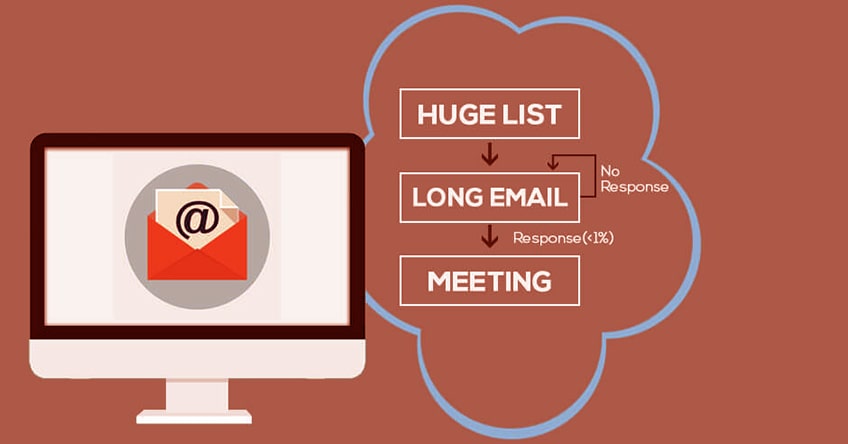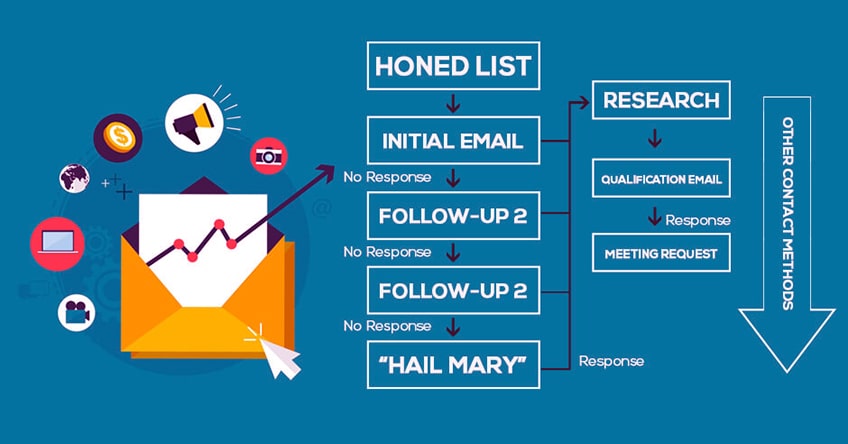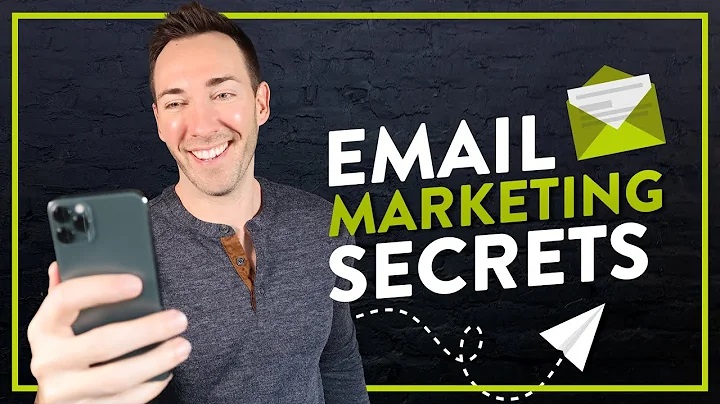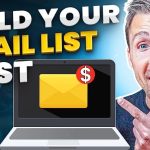Email marketing is not a passing fad. It is the series of events that begins with a chat and ends with a transaction. Companies are choosing the scenic road in areas such as digital marketing. However, without understanding the tiny changes that result in correct values.
As a result, the purpose of this article is to inform you of the one thing you may be missing regarding email marketing.
Successful Email Marketing: Things That Don’t Work
Going through the massive list of email marketing materials, it is simple to claim that marketers have been educated to believe that email marketing is a one-time activity.
Thousands of marketers send emails with valuable information and persuasive pitches, all with the goal of starting a dialogue.
The graphic above is an obvious example of a clichéd aspect of direct mail marketing in which the principal approach is concentrated on delivering flyers, pamphlets, and letters to potential clients.

To get down to business, the 1% response rate is achieved by sending emails to members who have already indicated interest in your company. Furthermore, a lower proportion (0.1 percent) of responses come from cold phoning prospects.
Simply said, an uneducated email marketing strategy may waste important time and irritate subscribers.
Successful Email Marketing: Items that Work
Here’s an explanation to clear up any confusion. Email marketing is diametrically opposed to direct mail approaches. Although email services allow for the transmission of huge documents, they are mostly utilized for exchanging brief messages.

Starting with a series of welcome emails and gradually creating a strong connection before proposing a meeting with prospects is the most tried and true method of reaching out to them.
What You’ll Need to Succeed in Email Marketing
- Permission List: It is critical to create your permission list before to sending your email in order to identify members who are likely to reply to your emails. Such an effort significantly minimizes the likelihood of the emails being marked as spam.
- Opening Email: it must have sentences that are no more than a couple of lines long; the goal is to capture the recipient’s attention. Opening an email is a driver of client acquisition.
- Follow-Ups: An initial email may lack piercing potential at times. As a result, a marketer must send a reminder email requesting a response. The purpose of the follow-up email is to act as a reminder rather than to provide new information to the recipients.
- If everything else fails to elicit a response, a last reminder email should be sent before fully deleting the receiver from future email programs.
- Research: Once you get a response from any of the aforementioned email programs, you must do extra research to gain insight into the individual demands.
- After understanding the client’s demands, you may send a personalized email that maps your solution to their needs. As long as the email does not overwhelm the reader, it is OK if it slightly stretches beyond the introductory email. If the dialogue is going well, you may officially request a consultation.
- Increase the rate of response by reaching out to prospects using alternative contact channels such as social media, voice mail, and so on.
The Bottom Line
The most important aspect of email marketing is to make the opening email simple and quick. You may improve response rates by narrowing down your list and writing a clear email. Most early emails are unlikely to produce high response rates. However, following up with follow-up emails might increase the results by up to 10%. By polishing that first email with meaningful information, you may secure numerous consultation possibilities with customers.



